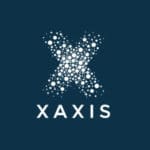This article was originally posted on Programmatic Italia

This article was originally posted on Programmatic Italia
In Italy, Radio is a medium that enjoys a loyal audience. According to the latest data from TER (Radio Publishers Table), within the first six months of 2018 there were over 34 million listeners tuned every day to radio stations.
However, the market is changing and for many years now, the medium is characterized by a strong digitalization that has changed the way we listen to the radio, adding new types of use, such as streaming on the web or smartphone or listening through Podcasts.
In the last period, the audio ecosystem has been further enriched by Web Radio, content created for online and available only with this mode of use, and has seen the explosion of a series of on-demand streaming services, from Spotify to Deezer.
Even in advertising terms we are witnessing a growth in spending on non-traditional audio media.
According to the latest data from eMarketer (based on IAB), global digital audio advertising spending is increasing rapidly, it grew to 1.6 billion dollars in 2017 (up from 1.1 billion in 2016).
In Italy, according to GroupM estimates, there are over 14 million Italians who use digital streaming services every day.
The phenomenon, characterized by important numbers, has allowed us to seize the opportunity, creating a product that utilizes the programmatic and aggregates the main web radio of RadioMediaset, Radio Montecarlo, some radio aggregators and major platforms international on-demand streaming, giving advertisers the chance to buy audio spots delivered before or during a listening session.
In fact, these spots tailored to the interests of each individual user, to their socio-demographic profile, to their device, to their geographical position, like any digital campaign.
Additionally, thanks to the four-handed work carried out with GroupM 's Research & Insight team, it’s now possible to link to the Audio programmatic campaigns,the target of Light Radio Listeners or those who consume less than an hour and a half of daily Traditional radio, with a real advantage for the client in terms of incremental reach achieved and CPG saving (on the specific target), preserving the frequency of the overall audio plan.
The digital world lives with measurement obsession. For clients accustomed to buying space in Radio, being able to measure audio campaigns is essential, just as it is for us it is able to guarantee this activity, in all its wealth of information.
Thanks to the digital efficiency and the granularity of the data it provides, the campaigns are measurable and tracked with the Listen Through Rate (LTR) parameter and the client can receive the data of the users who actually listened to the spot (today we boast a superior benchmark at 90%).
This is a market that is changing rapidly and there are many trends that can no longer be ignored, but even in this case it will be essential to inform operators and clients to start creating an Italian marketplace. In Italy there is a very strong radio culture but only a few traditional publishers can now be purchased through programmatic buying platforms. This highlights a great market opportunity that is also worth capturing on the publisher side.
In general, programmatic has gone beyond the boundaries of the online world, to embrace several other mediums—not just the audio but also the digital billboard for example—and Xaxis is not getting caught unprepared. In DOOH, we are certainly in a first phase of automation of the processes that has already lent to advertisers—over 20 customers activated this year including market leaders, such as Ford or Zalando—numerous advantages. On the audio front, we have foreseen aforementioned potential and have moved as first mover.
Within both markets, we offer our clients state-of-the-art and innovative advertising solutions, guaranteeing them a strategic competitive advantage.
Hemos encuestado a casi 5.000 profesionales del marketing en 16 mercados globales clave y hemos desenterrado algunas ideas fascinantes sobre cómo el sector piensa en la medición del éxito de los medios digitales y sus prioridades para 2019.
LEERLO AQUÍ >


